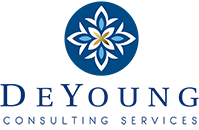
The other day, I had four back-to-back Zoom meetings followed by a phone meeting. At the end of the day, I was exhausted, even though I sat in my chair all day. In a world where we are forced to rely on technology to keep the work of our organizations going, the constant stream of pings, dings, notifications, emails and texts can not only leave us exhausted but can also leave us craving meaningful connections with others. The constant inundation of technological communication that COVID-19 has induced can be overwhelming, leaving us with minimal mental space to establish and nurture relationships with clients and coworkers. Strong connections create and foster rapport, which is a key component when working with clients. So, how do you create meaningful connections in an increasingly virtual workplace?
As a project manager, I serve as the funnel of information between our team and clients. Generally, I send all deliverables, status reports and pertinent information from our team to the client, and vice-versa. This results in a clean, streamlined flow of communication. In such a communication-heavy role, having dialogue with clients is key to building client rapport. In our organization, scheduling brief check-ins via phone or Zoom with the client, in addition to status reports via email, has been tremendously beneficial. Sure, emails are an easy way to quickly send information along, and emails definitely hold their importance in an overall communication plan, but emails don’t foster dialogue and allow for real-time conversation. Often, information emerges during an oral conversation that wouldn’t have emerged from an email one. This information can provide context for our team as we navigate through the project. For example, I was speaking with a client, and they mentioned they were concerned that not everyone on their team understood the scope of the project. This nugget of information was extremely helpful to our team, as we consistently managed the clients’ expectations throughout the different project phases. As opposed to email threads, real conversations lead to…you guessed it…meaningful connections!
Next, brush up on your active listening skills. Recently, I was on a project where I worked with our client’s external partner. While the partner’s intentions were good and their wealth of knowledge significantly contributed to a positive project outcome, their lack of active listening skills sometimes resulted in confusion, lost details and having to backpedal to reconstruct messaging sent to key stakeholders. I got the impression that they were always thinking of what to say next instead of listening. As a result, I didn’t feel connected to the colleague and struggled at times to connect with the project. Active listening means you are giving your full attention to the conversations unfolding before you, digesting and reflecting upon the information and then responding to that new information. On Zoom calls, active listening can be harder, especially if you are working from home where distractions may be constant. Make sure to put your phone away, take notes on the conversation and ask clarifying questions. It helps to look at the camera every so often so it looks like you are making “eye contact” with your coworkers!
The next step is to not let your client connections wither after the project concludes. It is important to our team to deliver top-notch products to our clients, but it is equally important to us that our clients actually use the materials we deliver to add value to their organization. Both your clients and your own organization can benefit from post-project follow ups. You stay fresh in their minds, should the opportunity for additional work or a referral arise. More importantly, you’re demonstrating that you value their work and you’re interested in seeing the fruits of your labor contributing to their overall success.
Finally, look inward and ask, “Is my team connected?” A well-connected team yields better project results than a team that operates with superficial undertones. A connected team will walk into a client meeting on the same page with clear expectations of each other’s roles and responsibilities. More importantly, well-connected teams enjoy working with each other and tend to exude joy and an enthusiasm for their work. In addition to enjoying the company of my colleagues at DeYoung Consulting Services, I love that we are innovative, collaborative and transparent. No person is an island on our team, and I firmly believe that because we make an effort to consistently connect with each other, we provide better services to our clients.
Connecting in the workplace isn’t just about sending emails and quick voice messages, facilitating kick-off meetings and sending final deliverables. It’s about the unspoken messaging that happens when you make an effort to nurture positive relationships and experiences with your co-workers and clients. Connection takes your investment in a project to the next level, allowing you to understand the current state of your client’s organization, meet them where they are at, usher them through the project purpose and celebrate positive outcomes together.
